If you have got a new cast iron cookware, congratulations; you have got yourself that will last for a lifetime and more. There are a lot of positives to using cast-iron cookware, especially Meyer cast iron cookware range. Cast-iron develops a non-stick coating that keeps food from sticking without the use of chemicals. Cast-iron cookware that has been properly seasoned requires relatively little oil for cooking. Also, you have the option of beginning a dish on the burner and transferring it to the oven to finish cooking.9
To keep your new cast-iron skillet in good condition, all you need to do is practise safe handling procedures each time you use it. Most of us have had our skillets for some time, and this typically increases the lifespan as well as performance of your favourite cookware.
Table of Contents
- Top tips to maintain cast iron cookware:
- Constant Upkeep
- Cast Iron Seasoning: A Step-by-Step Guide
- What is seasoning?
- Seasoning cast iron cookware on stovetop:
- Seasoning cast iron cookware in oven:
- Why should you season your cast iron cookware?
- How to clean cast iron cookware?
- How do you know when to season the pan?
If you have got a new cast iron cookware, congratulations; you have got yourself that will last for a lifetime and more. There are a lot of positives to using cast-iron cookware, especially Meyer cast iron cookware range. Cast-iron develops a non-stick coating that keeps food from sticking without the use of chemicals. Cast-iron cookware that has been properly seasoned requires relatively little oil for cooking. Also, you have the option of beginning a dish on the burner and transferring it to the oven to finish cooking.9
To keep your new cast-iron skillet in good condition, all you need to do is practise safe handling procedures each time you use it. Most of us have had our skillets for some time, and this typically increases the lifespan as well as performance of your favourite cookware.
Top tips to maintain cast iron cookware:
If you want to avoid food sticking to your pan while baking, frying, or roasting, heat the pan first. Heating cast iron requires patience. You may check if the pan is hot by placing your palm an inch or two above the bottom.
Remember to keep your potholders close by because the handle might become dangerously hot during and after cooking.
Cast iron should be washed in hot water while the pot is still hot using a scrubber and salt as an abrasive. Cast iron's natural oils can deteriorate if you wash it in soap or wash it in the dishwasher. Avoid letting your pans soak in water, as this can lead to rust.
Before putting it away, make sure it's dry. Cast iron can be dried out to the bone by placing it on the burner over high heat. The pan will rust if there is too much moisture in it.
Oil the pan with a rag or paper towel and put it away. It's ideal to use flaxseed oil, but you can get by with canola or vegetable oil if you have to.
Related Article: Why is cast iron cookware better than regular cookware?
Constant Upkeep
Wash your skillet gently with water and a tiny bit of mild soap after each use. To avoid scratching your surfaces, use the firm side of a two-sided sponge instead of a metal scrape. Cast-iron cookware that has been washed and rinsed should be dried completely before being returned to a preheated oven for further 10 minutes. Take it out of the oven and use a paper towel to spread a very thin layer of neutral oil all over the surface. Adding oil to hot cast iron allows for the oil to conduct the chemical reaction and produce a polymer, which protects the surface. Keep dry when storing.
Cast Iron Seasoning: A Step-by-Step Guide
Meyer offers pre-seasoned cast iron cookware that’s ready to use as soon as you unbox it. However, you have to season every cast iron cookware. Because the very first step in utilising cast iron for cooking is to season it. There's no need to feel intimidated if you have no idea what "seasoning a pan" entails.
What is seasoning?
Seasoning is a durable protective coating that forms on the pan as numerous layers of oil are burned into the skillet, making it nonstick and rust-resistant. Cast iron can be seasoned by first coating it in a fat-like oil, then heating it over the smoke point so that the oil polymerizes and makes the cast iron nonstick. The porous iron pan becomes nonstick because fat polymerizes from a liquid to a smooth, hard solid during cooking.
You can season cast iron with just about any kind of cooking oil, but keep in mind that oils with strong flavours, such as avocado or sesame seed oil, may impart their taste to your cookware and the food you prepare in it.
Vegetable and canola oils are popular choices since they are inexpensive, widely available, and have a mild flavour.
For polymerization to take place in any oil, you must heat the pan beyond the oil's smoke point.
Seasoning cast iron cookware on stovetop:
To season a pan, first heat it until it is warm and slightly smoking, and then massage it all over with oil. Because of this, the oil is able to change into a thin, plastic-like layer. When you put oil or fat in a skillet again (for example, to fry chicken or sauté vegetables), you add another layer of spice, making the pan even better.
Seasoning cast iron cookware in oven:
The oven should be preheated to 450 or 500 degrees Fahrenheit to begin with. Clean each pan down to the bare metal, removing any rust, muck, or debris from the bottom as well as the handles. Spread oil over evenly with a rag or paper towel.
Invert the pans inside the oven, possibly with a tray below to catch any dripping oil. After 1 hour, turn off the oven but leave the pans inside so they can cool slowly. You should season your collection again if you have the luxury of doing so.
Why should you season your cast iron cookware?
Cast iron can be "seasoned" to prevent rust and develop a natural nonstick coating. It's the first and possibly most crucial step in maintaining cast iron.
How to clean cast iron cookware?
Always keep things clean
Cast iron should be cleaned immediately after use to avoid rusting and to preserve its nonstick surface. Cast iron absorbs tastes readily, so you may utilise it to make sure your next meal won't taste like the last.
For fear of ruining the nonstick seasoning, some individuals refuse to clean their cast iron with soap or abrasive sponges at all costs. Because of these factors, hand washing cast iron is recommended over using a powerful dishwasher.
Scrubbing with a mild soap and water solution is usually OK, but you shouldn't abuse your cast iron or you'll have to re-season it frequently.
One simple solution is to use salt, which has the right amount of abrasion to get rid of leftovers and residue without harming the nonstick coating.
You might also use a chain mail, which is a tool constructed of interconnected rings of metal (often stainless steel or titanium). Also, they work wonderfully for cleaning cast iron without damaging the nonstick coating.
Keep it in a secure location.
When putting away your cast iron, make sure it is thoroughly dry and free of any food particles that could cause rust.
How do you know when to season the pan?
It has to be seasoned if there are rust spots. Although the skillet may not have rusted, you may find that it is more difficult to clean due to the increased amount of food particles sticking to it. One easy way to tell if it's time to season is to hold the pan up to the light. Season your skillet after the metal has turned a bluish-silver colour and a silvery sheen in natural light. A well seasoned skillet will be a uniformly dark matte black in colour, and food will not stick to it.
However, it is recommended to season your cast iron cookware as frequently as you can

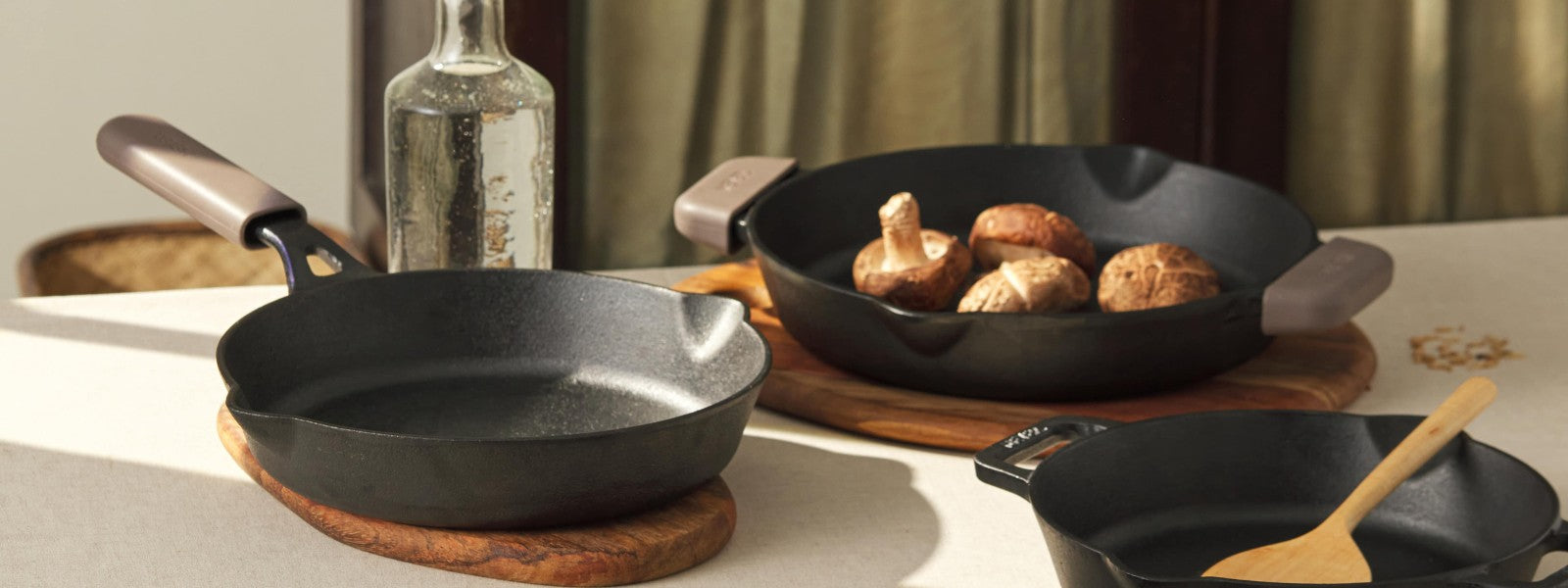
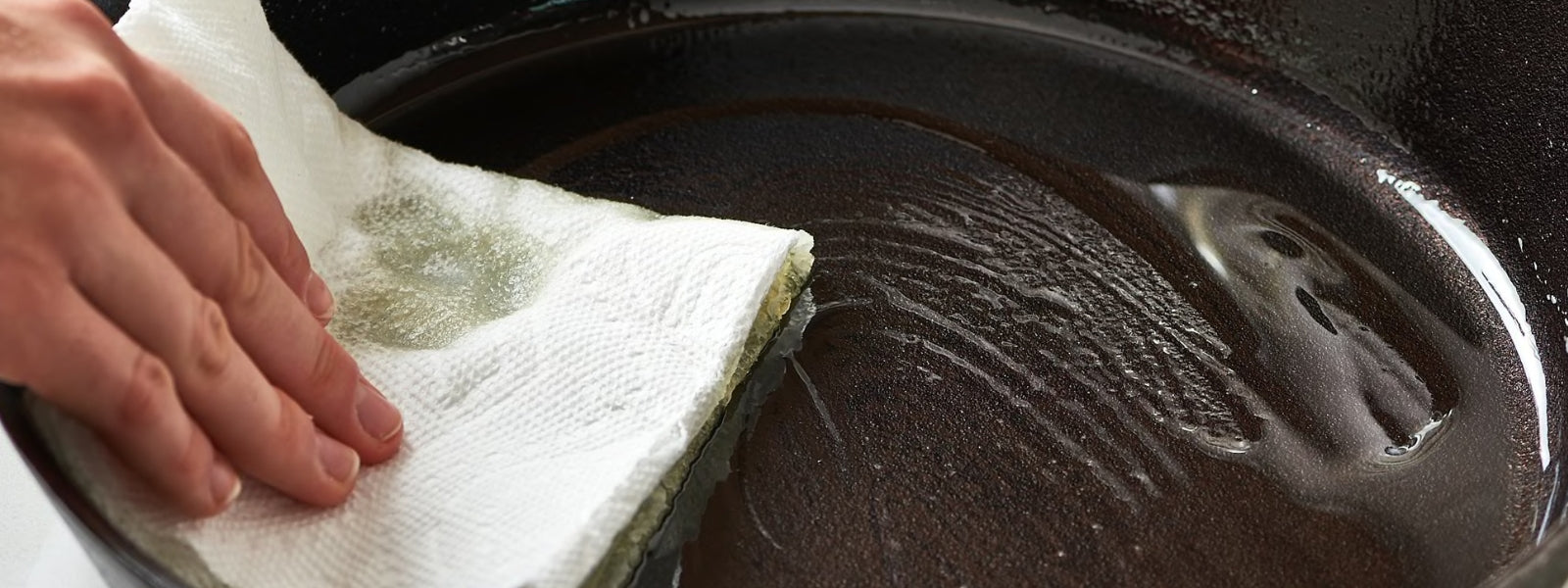
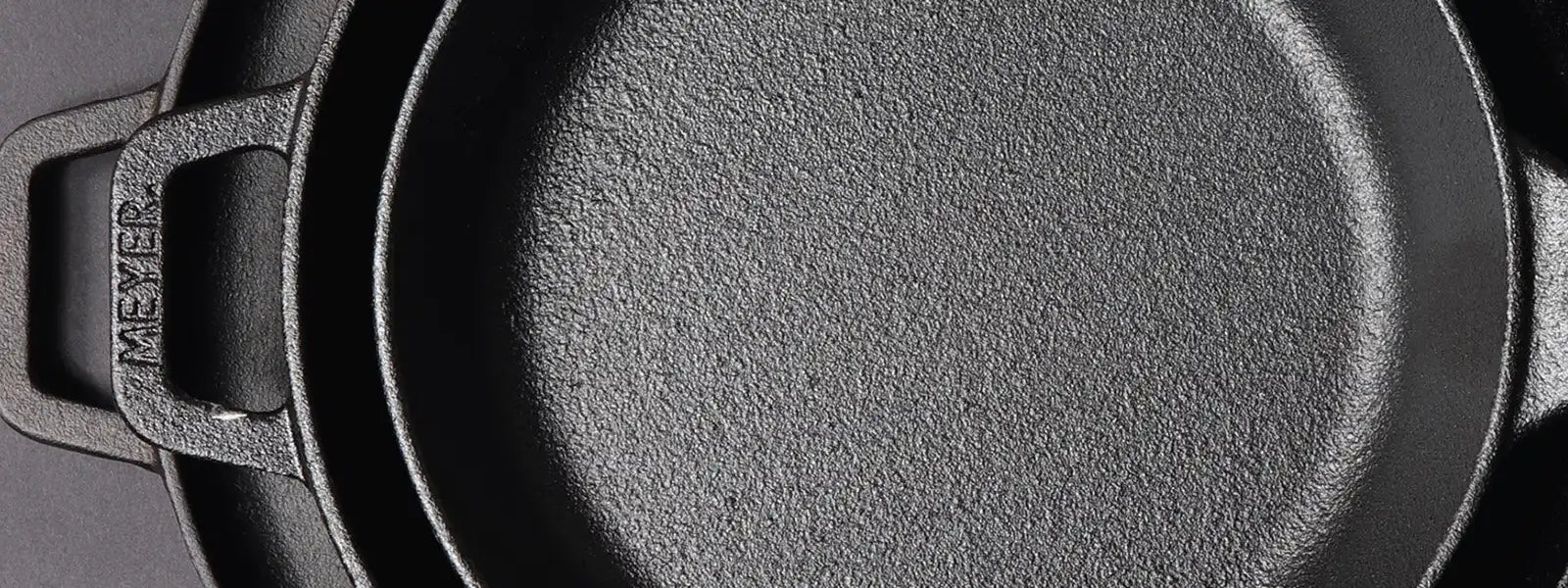

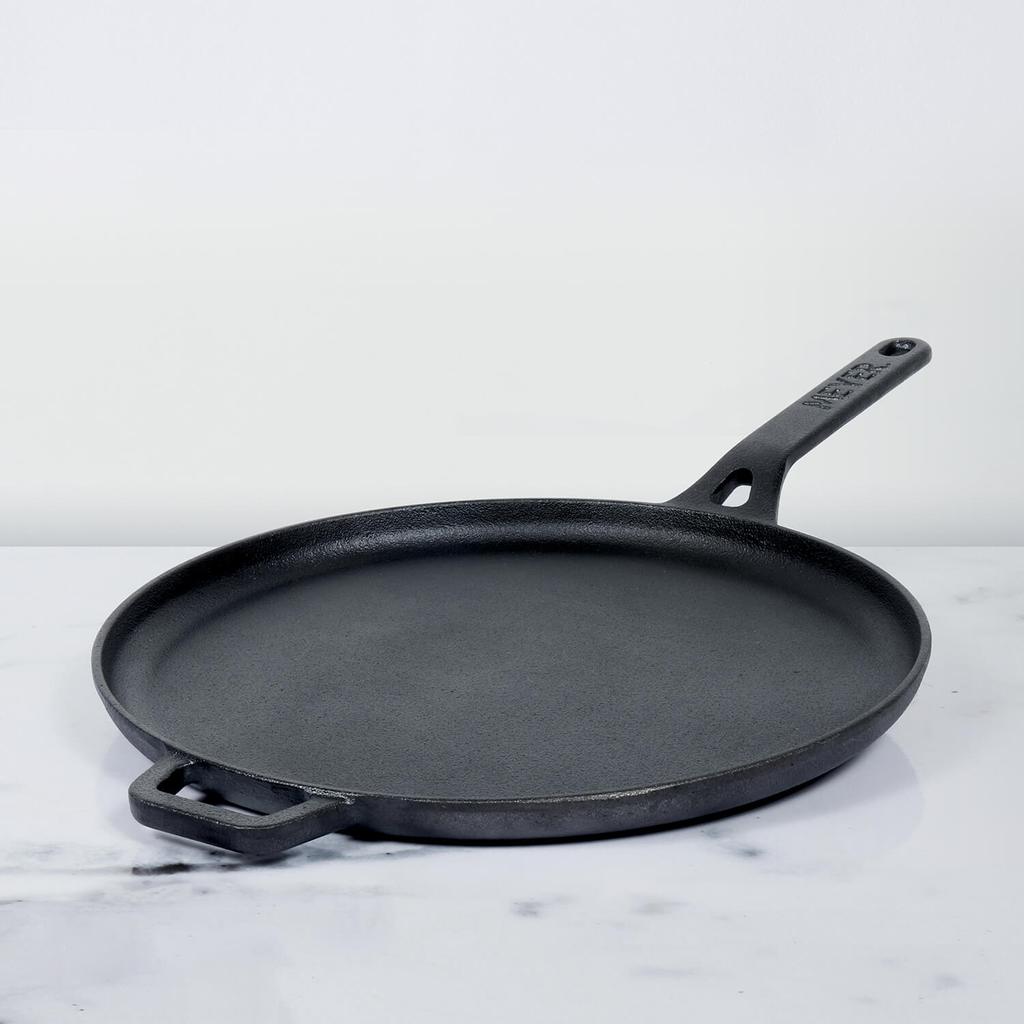
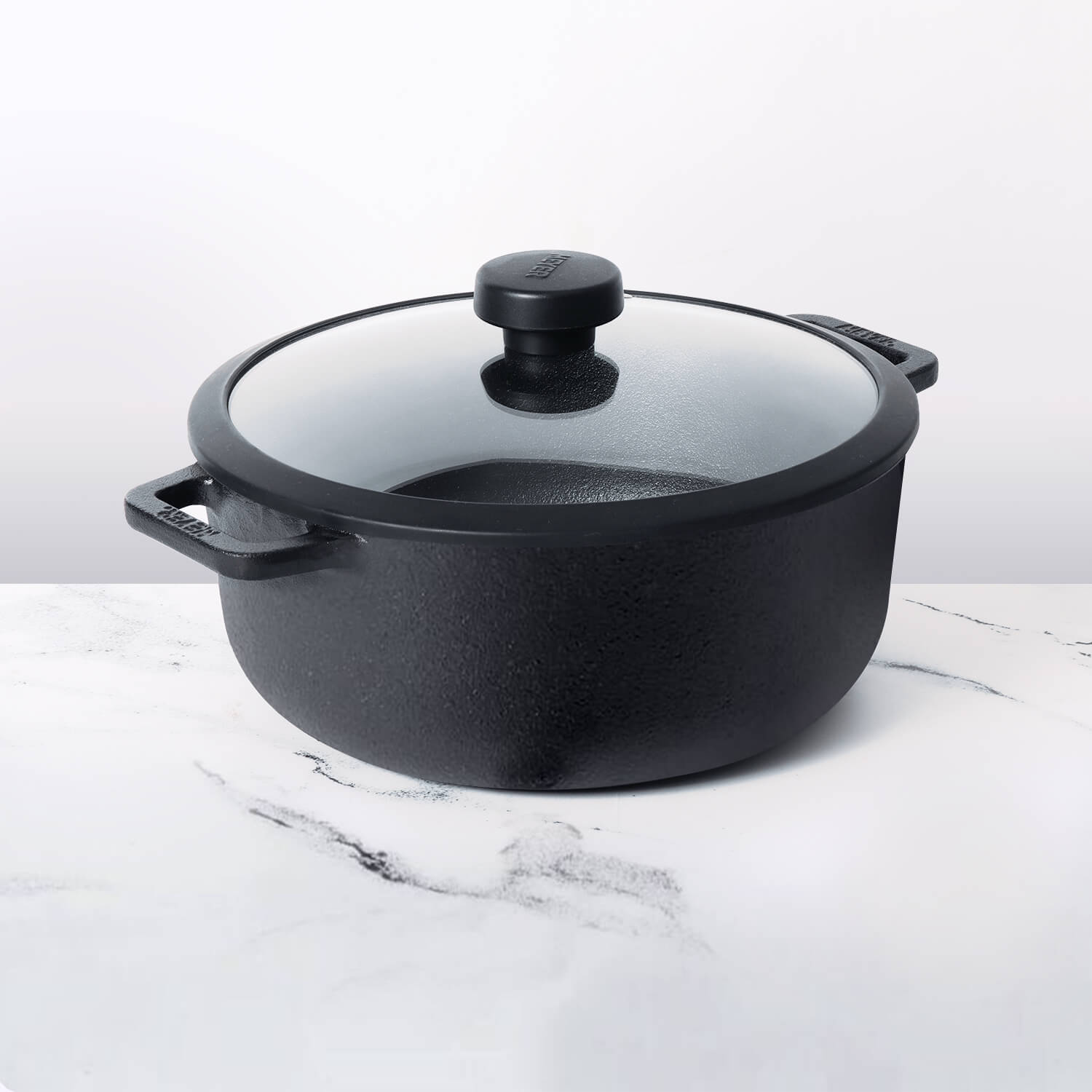




Leave a comment